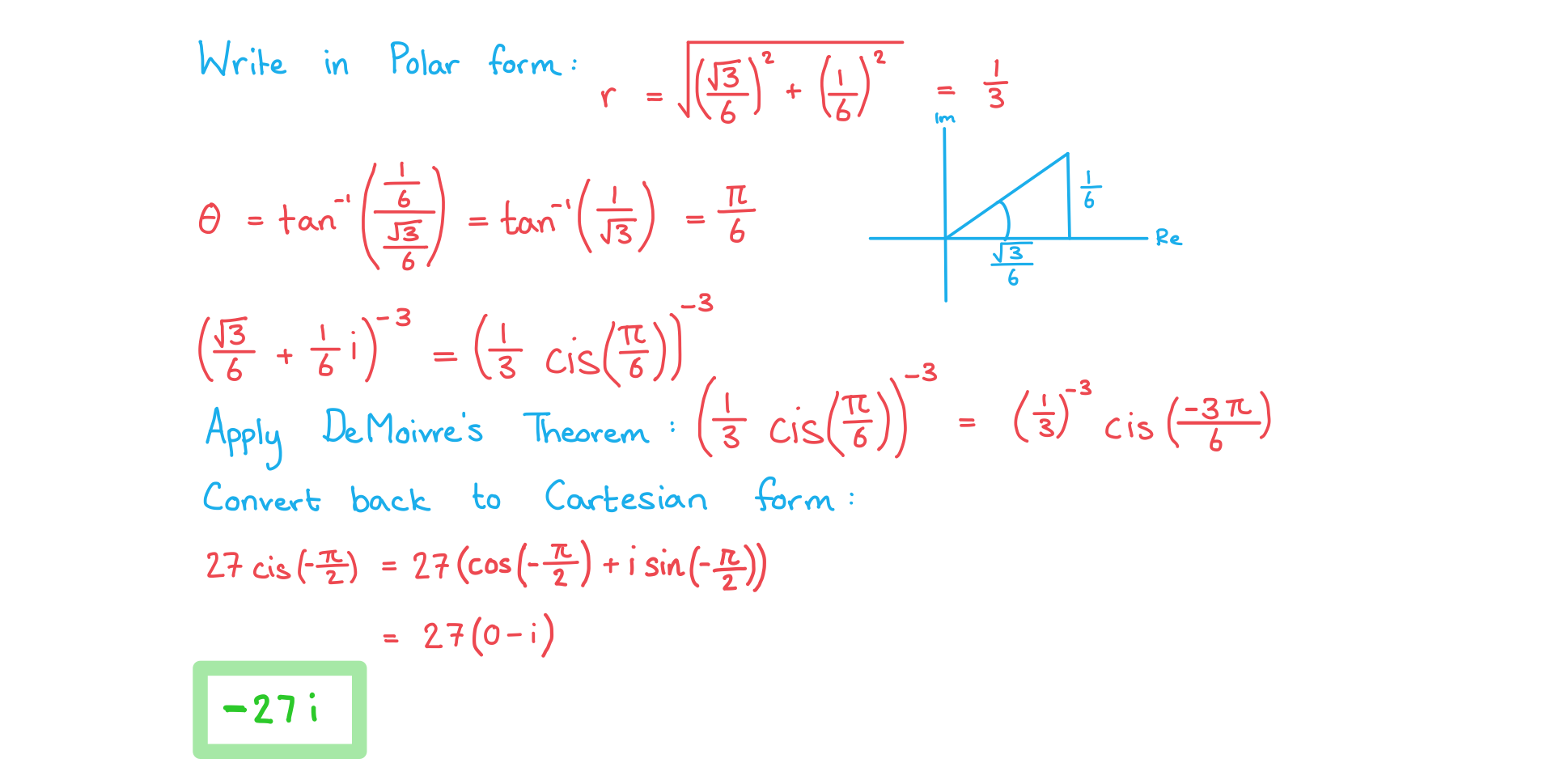De Moivre's Theorem
What is De Moivre’s Theorem?
- De Moivre’s theorem can be used to find powers of complex numbers
- It states that for
,
- Where
- z ≠ 0
- r is the modulus, |z|, r ∈ ℝ+
- θ is the argument, arg z, θ ∈ ℝ
- n ∈ ℝ
- Where
- In Euler’s form this is simply:
- In words de Moivre’s theorem tells us to raise the modulus by the power of n and multiply the argument by n
- In the formula booklet de Moivre’s theorem is given in both polar and Euler’s form:
How do I use de Moivre’s Theorem to raise a complex number to a power?
- If a complex number is in Cartesian form you will need to convert it to either modulus-argument (polar) form or exponential (Euler’s) form first
- This allows de Moivre’s theorem to be used on the complex number
- You may need to convert it back to Cartesian form afterwards
- If a complex number is in the form
then you will need to rewrite it as
before applying de Moivre’s theorem
- A useful case of de Moivre’s theorem allows us to easily find the reciprocal of a complex number:
-
- Using the trig identities cos(-θ) = cos(θ) and sin(-θ) = - sin(θ) gives
-
- In general
Exam Tip
- You may be asked to find all the powers of a complex number, this means there will be a repeating pattern
- This can happen if the modulus of the complex number is 1
- Keep an eye on your answers and look for the point at which they begin to repeat themselves
Worked Example
Find the value of , giving your answer in the form a + bi.

Proof of De Moivre's Theorem
How is de Moivre’s Theorem proved?
- When written in Euler’s form the proof of de Moivre’s theorem is easy to see:
- Using the index law of brackets:
- Using the index law of brackets:
- However Euler’s form cannot be used to prove de Moivre’s Theorem when it is in modulus-argument (polar) form
- Proof by induction can be used to prove de Moivre’s Theorem for positive integers:
- To prove de Moivre’s Theorem for all positive integers, n
- STEP 1: Prove it is true for n = 1
- So de Moivre’s Theorem is true for n = 1
- STEP 2: Assume it is true for n = k
- STEP 3: Show it is true for n = k + 1
- According to the assumption this is equal to
- Using laws of indices and multiplying out the brackets:
- Letting i2 = -1 and collecting the real and imaginary parts gives:
- Recognising that the real part is equivalent to cos(kθ + θ ) and the imaginary part is equivalent to sin(kθ + θ ) gives
- So de Moivre’s Theorem is true for n = k + 1
- STEP 4: Write a conclusion to complete the proof
- The statement is true for n = 1, and if it is true for n = k it is also true for n = k + 1
- Therefore, by the principle of mathematical induction, the result is true for all positive integers, n
- De Moivre’s Theorem works for all real values of n
- However you could only be asked to prove it is true for positive integers
Exam Tip
- Learning the standard proof for de Moivre's theorem will also help you to memorise the steps for proof by induction, another important topic for your AA HL exam
Worked Example
Show, using proof by mathematical induction, that for a complex number z = r cisθ and for all positive integers, n,

